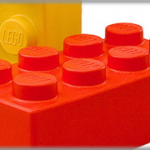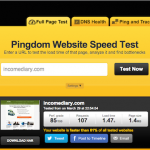
Quick, what’s the point of a headline?
Is it…
A.) Get people to click?
B.) Make a promise to the content?
C.) Pique curiosity?
D.) All of the Above?
Obviously, the answer is D. But the question is, how do we get a headline to do all of that?
Well, the short answer is practice, and research.
But if you’re looking for a shortcut, I’ll let you in on a little secret…
The most effective headlines are rehashed versions of classic newspaper and magazine advertisements from the early days of copywriting.
In other words, a good majority of the most trafficked, most ReTweeted, most shared articles, are using headline templates passed down through various generations of copywriters.
Jon Morrow is an expert in crafting classic headlines into modern attention-grabbers, and to anyone searching for more at the end of this article, I highly recommend reviewing his work on the subject.
Here are three categories of the most effective headline styles available.
Learn them, use them, recycle and update them for your own personal use.
The “How To” Headline
How To Grow An Embarrassingly Large Readership
How To Launch A Million-Dollar Business
How To Earn 7 Figures By 2013
Millions of “how to” articles exist, but it’s never enough.
We crave instruction, whether we know it or not.
There’s a reason entire websites exist to teach people how to do something: when it’s put in front of us, suddenly we’re curious.
A “how to” title is your opportunity to learn something in five minutes or less.
Free education is highly valuable,and the opportunity for it never gets old.
The trick with the “How To” headline is to make a strong and clear promise, then deliver.
Bonus: Add a power word into your headline to make browsers think twice about skipping your article.
The “Be Afraid” Headline

Is Your Business Safe From Corporate Competition?
Warning: Your Blog May Be Under Attack
5 Mistakes To Avoid When Networking
News outlets use this religiously as a lead-in to bits about everything from gun safety to hair-salon hygiene.
While we’ve all rolled our eyes at a fearmongering headline, you also know you’ve clicked on articles offering a warning or the exposition of a hoax… just in case.
You want to know you’re safe, whether it’s related to physical health or professional well-being.
When your sense of danger is triggered even briefly, you imagine the worst possible scenario and feel obligated to learn more.
Better safe than sorry, after all.
The “Calm Down” Headline
The Zen of Online Marketing
Ten Ways To Simplify Your Work Load
3 Ways to Work Less, Produce More
We all worry we’re not doing enough. We all feel like we’re just trying to keep our head above water.
The “Calm Down” headline is a way to throw your reader a life jacket.
This type of headline signals “It’s OK.” You’ve figured out how to ease that burden and you’re more than happy to share how.
Whenever you help someone simplify their lives, they’ll remember you and be forever grateful.
Don’t Stop There… Do the Research.
There are many more categories of headlines out there.
The domain of headline-writing has been filled to overflowing for decades, but these three types of headlines are a solid start to grab more attention for your blog.
Watch for articles that get the most retweets. Look at what makes the front page of Digg, or Reddit, or other social news aggregation sites. Use Topsy to see what gets shared the most from top websites.
Watch for patterns to see what consistently does well, then write epic blog posts.
And before we wrap this up, I highly recommend that you download Jon Morrow’s Headline Hacks report, and read through every article in Copyblogger’s Magnetic Headline series.
Remember, it’s the headline that brings people in, and even huge sites like New York Times have room to improve.
You don’t have to get it perfect right away, but you do have to work on it.
The more work you put into your headlines, the better shot you have at getting crazy traffic.













